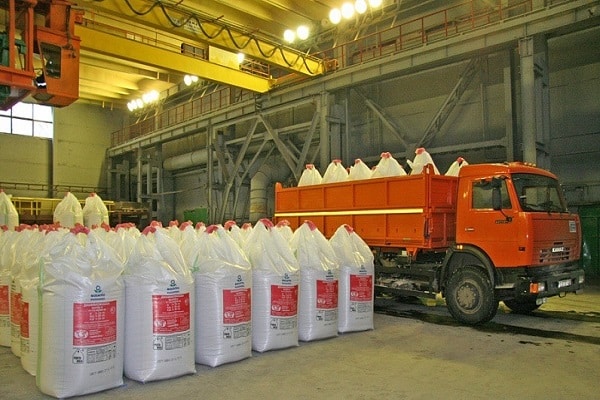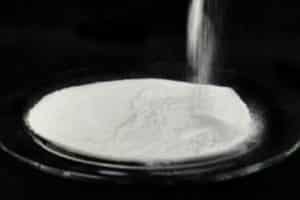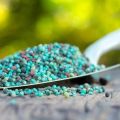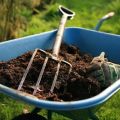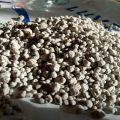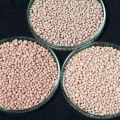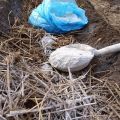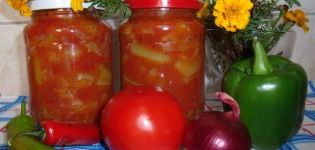Composition and characteristics of Diammofosk fertilizer, use in the garden
Diammofoska is a complex of mineral fertilizers that are necessary for the full growth and development of any plant in the garden (fruit trees and shrubs, vegetable beds, flowers). All the components included are compatible with each other, they are effective and safe. The properties of the agrochemical are not affected by the composition of the soil, it can be applied both before planting and during subsequent dressing.
Description and characteristics
Mineral fertilizer is produced in the form of granules with neutral acidity, which contain a balanced ratio of all useful elements. After application to the soil, it begins to act almost immediately. If you are interested in the question: what color of the granules, then we can say that they are pink or red.
A complex fertilizer is produced in two main forms, each of which differs in the percentage of nitrogen-phosphorus-potassium components. Suitable for use on all soils, especially depleted.

Mode of application
You can use Diammofoska for any garden crops.
- If the soil is cultivated, then the application rate is 20 g per sq. m.
- Uncultivated soils require more fertilization. 30 g per sq. m.
- In the greenhouse, the soil is depleted faster, so the dosage is 40 g per sq. m.
- For berry bushes, it is enough to add 15 g per sq. m.
- Under fruit trees, 25 g per sq. m.
- If perennial flowers are grown in the garden, then while loosening the soil, 25 g per sq. m.
The main period of top dressing is spring, but it can be applied at any stage of plant development.
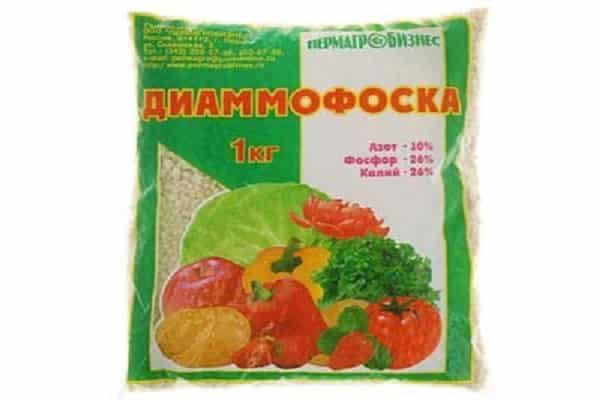
Composition and form of release
Mineral fertilizer is produced in the form of granules. The active substance is represented by three components. The main formula of the agrochemical is nitrogen, potassium and phosphorus. The composition also includes additional trace elements (for example, zinc, calcium and iron).
Phosphorus occupies about 24% of the total fertilizer mass. Plants need it for normal development, but in its pure form it is poorly absorbed. The phosphorus entering Diammofoska is equipped with oxygen, therefore, when interacting with the ground, the granules begin to split into tiny particles. Oxygen allows nutrients to be evenly distributed and absorbed by the roots in sufficient quantities.
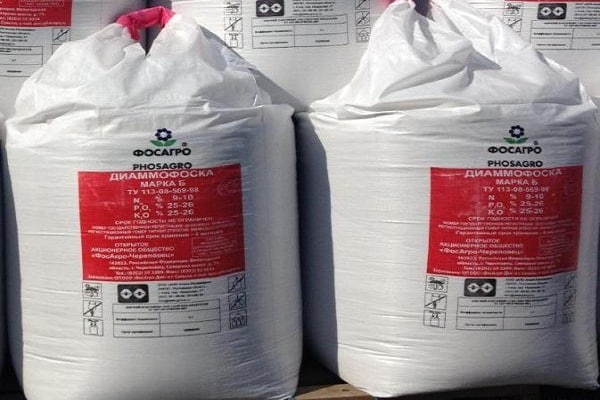
Potassium is especially needed by plants during flowering and fruit formation. It promotes a better supply of nutrients to the roots.In combination with phosphorus and nitrogen, it improves the taste and quality of the crop. The storage period of the harvested crop is increased.
Nitrogen helps to promote plant growth and formation of ovaries, gives vitality and increases resistance to disease and pests. The element is especially important in the early stages of development of a young seedling.
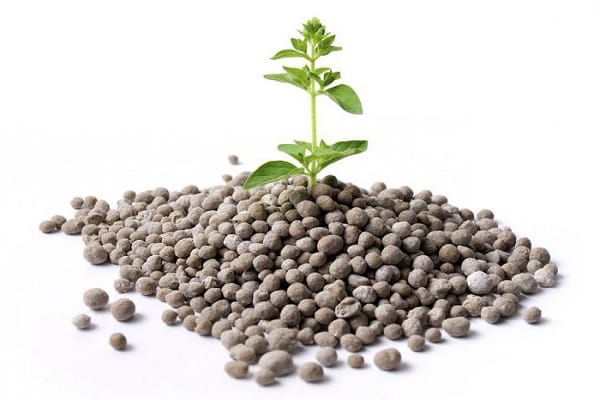
Pros and cons
DAFK is characterized by a large list of positive effects on the state of the underground and aboveground parts of the plant:
- the action occurs almost immediately after adding to the soil;
- can be used for any plant in the garden and vegetable garden;
- improves keeping quality of the harvested crop;
- suitable for any soil composition;
- the composition does not contain harmful additives;
- increases the quantity of the crop and its quality;
- ease of use;
- can be combined with organic ingredients.

The disadvantages of complex fertilizer include the chemical origin of the composition, it is imperative to adhere to the recommended application rates and follow the storage rules.
Instructions for preparing the solution
Diammofoska is used not only in dry form, but also in the form of a liquid solution. The dosage of the component depends on the type of plant. Detailed instructions on how to dilute the components are available on each fertilizer package. Most often it is required to dissolve 1-2 g of the substance in one liter of water.
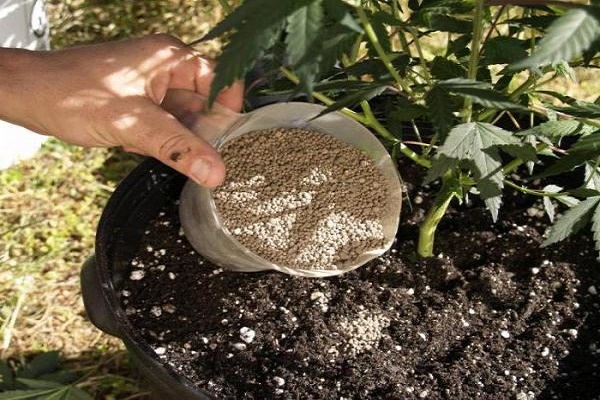
The order of use in the garden
Fertilizer can be applied during the spring preparation of the land plot for planting, or used in the form of a liquid solution during watering at one of the stages of plant development.
If it is supposed to be applied dry, the soil is preliminarily watered. The application rate of the nutrient composition depends on the cultivated crop.
It is recommended to apply a liquid solution under the root in the morning or evening hours. It is worth protecting the green part of the plant from getting the solution, otherwise it can lead to burns.
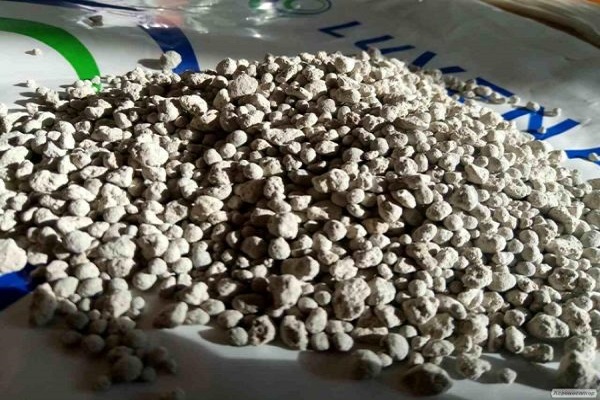
Nightshade crops
The nightshade family includes peppers, potatoes, tomatoes, and eggplants. During the entire growing season, they need additional feeding. Diammofosk is ideal. Fertilizer strengthens the roots and the green part of the plant, increases the quantity and quality of the crop.
During the spring preparation of the land plot, 48 g per sq. m. (in the greenhouse a little less - 35 g). When transplanting seedlings, under each bush, add 4 g of powder to the hole.
For irrigation, you can prepare a liquid solution with organic components. 12 g of Diammofoska and 500 g of rotted manure are added to a bucket of water. Pour the solution under the root, avoiding contact with the leaves. It is enough to make this top dressing twice a season.
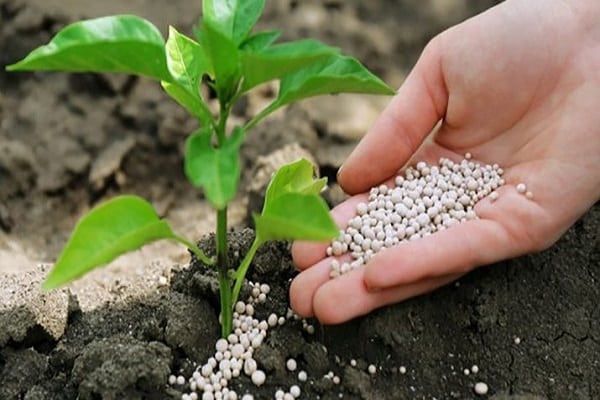
Tomatoes
Complex fertilizer activates the growth of the green mass of the plant, strengthens the stem and root system. The fruits become dense, juicy, sweet, do not crack and are stored for a long time.
When preparing the site in the spring, you need to add 28 g per sq. m (in the greenhouse, the consumption rate increases to 50 g). It can be added to the hole before planting, 4 g of fertilizer is added under each root (in closed ground up to 6 g).

Potatoes
Diammofoska is especially necessary for potatoes. Fertilization helps to increase the yield and improve the taste of the vegetable crop. During planting, 5 g of components are added to each well. You can simply spread the powder over the area where you plan to plant the potatoes. Consumption rate 20 g per sq. m. After that, the soil must be loosened and watered.
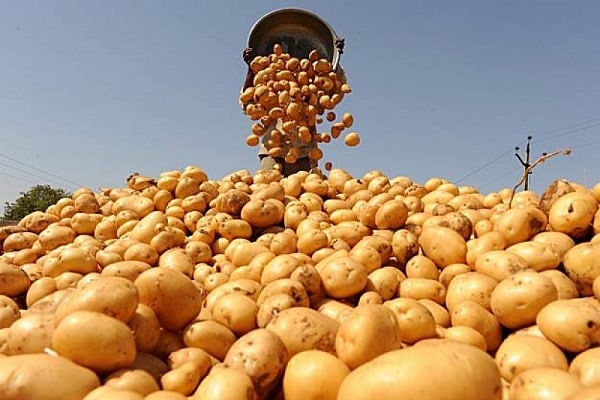
Cabbage
Mineral dressing after application under cabbage ensures active growth of green mass and setting a dense head of cabbage. Fertilization helps prevent cracking and increases plant resistance to many diseases and some pests.
During the spring digging of land, 27 per sq.m, you can add granules just before planting, 4 g are poured into the hole. During autumn digging, the amount of fertilizer increases to 34 g per sq. m.
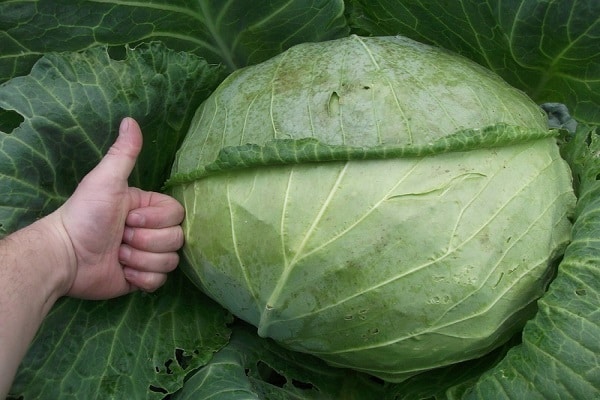
Strawberry
If you add Diammofosku to the soil where strawberries grow, you will notice that the bushes will become stronger and stronger, and the berries will form juicy, sweet and large. During soil cultivation in the spring, it is enough to add 15 g of substance per sq. m. It is recommended to add a liquid solution during the appearance of ovaries.
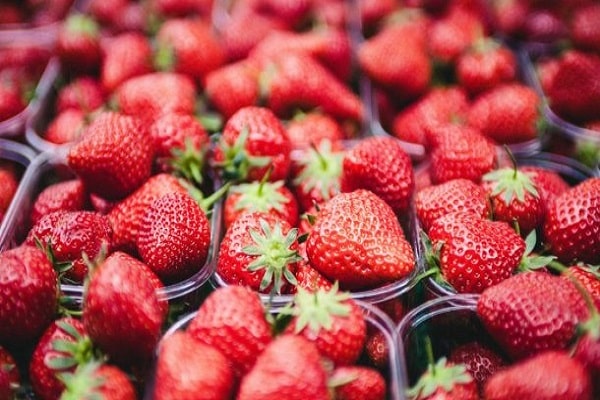
Shrubs and trees
Fruit trees and shrubs also need additional feeding. So, for raspberries, currants, blackberries, plums and apricots, it is enough to add 22 g of powder per sq. m. For apple and pear it is necessary to add more substance - 30 g. Granules are distributed under the grape bushes over the snow cover. During thawing, the granules will dissolve and soak into the soil.
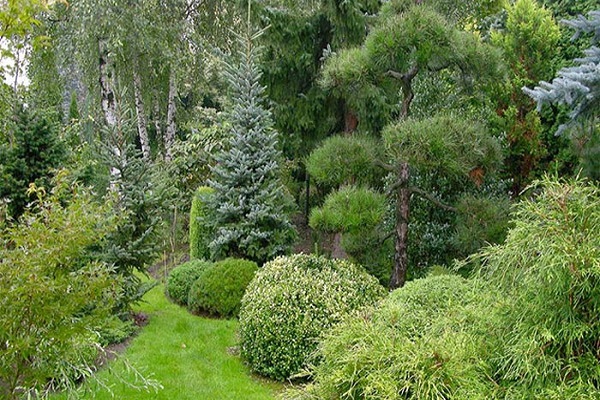
Seedling
The key to a good harvest is strong and healthy seedlings, so timely and correct feeding must be ensured. The first feeding is carried out when the first pair of real leaves unfolds, urea is best suited. The second feeding is carried out in two weeks, 1 g of Diammofoska is dissolved in a liter of water.
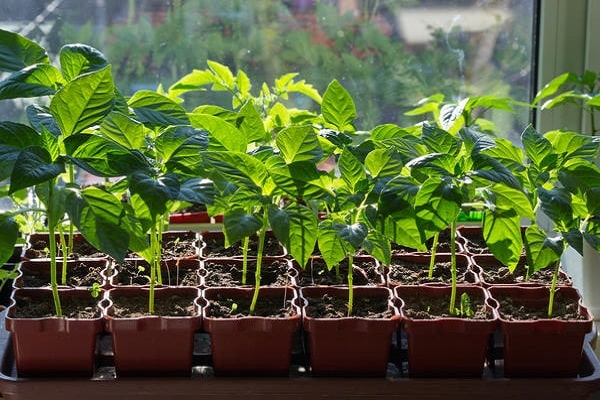
Lawn
In order for the lawn grass to grow well, be juicy and have a rich green color, fertilizer is applied in the middle of summer at the rate of 280 g per sq. m, and in the fall the dosage is reduced to 140 g. In the spring, it is desirable to add ammonium nitrate to the soil.

Winter crops
Diammofoska is also introduced during the cultivation of winter crops. Under winter wheat and barley, 7 centners of fertilizer are applied per hectare, embedding to a depth of 8 cm. During the autumn digging, it is enough to add 3.5 centners per hectare.

Flowers and indoor plants
Diammofoska is suitable for feeding flower beds on the street, as well as for indoor flowers. They need a complex of mineral components and roses. It is necessary to prepare a liquid solution for watering. 3 g of the substance are dissolved in three liters of water. Watering flowers with this solution is recommended once every two weeks.
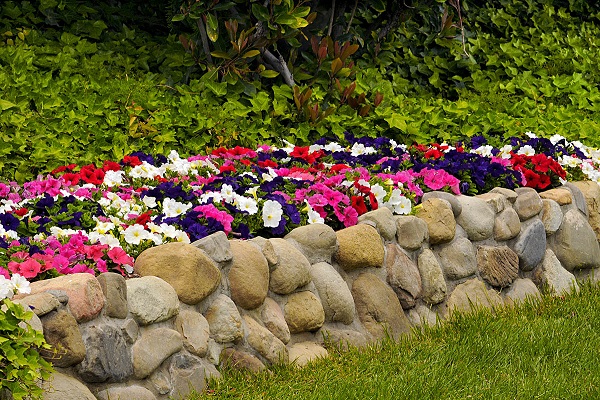
Precautions
It is necessary to add components and prepare solutions, observing the recommended dosages. All components are safe for humans and the environment, but during use it is imperative to use rubber gloves; a respirator will help against inhaling vapors. Clothes are immediately removed and washed after work. Do not allow exposed skin to come into contact with the powder. After processing the soil with fertilizer, wash your face and hands with soap and water.

Storage conditions
It is necessary to store the complex mineral fertilizer in a package, away from direct sunlight and food, in a room with good ventilation and a humidity of no more than 50%. The air temperature can be from 0 to +30 degrees. The shelf life of Diammofoska, subject to all storage rules, is 5 years.
